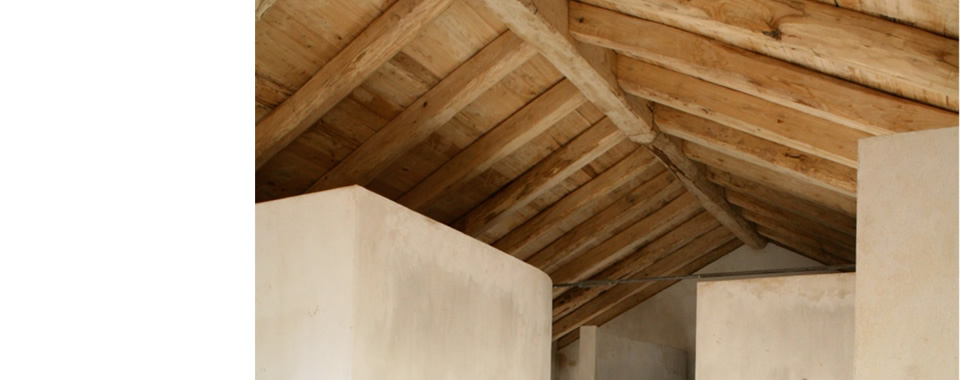

Score - Sustainable Construction in Rural and Fragile Areas for Energy efficiency
Guidelines for Integrated territorial Planning:
Eco-compatible materials
The following guidelines come from a deep analysis of case studies, norms, and regulations, relating at both national and regional levels. This analysis is summarized in a card that can be downloaded in French language.
The demand for environmentally friendly materials or biobased is strong. Manufacturers have developed sales pitches for their products.
But to this day, even for a professional, it is very difficult to find clear information. Eco-labels exists, but they do not all have the same values and are for the most part very specific.
It is very difficult to give a definition of an environmentally friendly material. Indeed, regarding to the multitude of criteria, each material has advantages and disadvantages (energy, water, resource depletion, savings generated by implementing life, water pollution, air pollution,...)
However, the regulation has developed these materials by publishing two decree:
-
A label to create a "bio-sourced building," details still to come to have clear definition of this label,
-
The other, is an obligation of display on the product, about the indoor air pollution caused by materials.
In fact, even some natural materials can also emit pollutants.
There is a standard that defines the method of calculating the life cycle analysis of materials. This measures the impact of materials from the extraction of raw materials to recycling at end of life, according to 10 criteria.
These data are available on the basis INIES. Computer software can "agglomerate" data at the scale of buildings, such as Elodie, Equer, ...
The use of eco-compatible materials also helped to create or diversify existing activities: insulation with goose quill, use of straw or hemp in construction, construction of dry stone walls, ...
But even if the demand is high, these materials are often poorly known, there are few craftsmen used to the eco-compatible materials, and some client are much more in confidence with industrial products which conditions of employment are precisely defined.
Indication for the bio-construction action plan
Pursuant to the guidelines written above, are here synthetically reported the criteria/examples for pilot projects to be financed in MED territory, in relation with the specific treated theme. These criteria/examples, together with the ones resulting from all the themes of eco-construction tool matrix, will make up a Bio-construction Action Plan for each partner countries.
The creation of a biobased label building will define and classify materials into two categories.
Today too many labels exist on the market, European harmonization appears necessary, in order to give clear information to customers, but also to better enhance the efforts made by manufacturers on the European market.
Regulations in terms of labeling on products should also be harmonized at European level.
Also programs to develop local industry production, processing and marketing of eco-materials should be implemented. Because today, there is a vicious circle: users complain that their building is not constructed with eco-compatible materials, constructors say that they cannot find them on the market, and manufacturers that demand is not sufficient to produce it.
Actions to transform this vicious circle into a virtuous circle would be necessary.
Finally, a specific regulation for the use of these eco-materials should be considered for the renovation of old buildings and / or history.
Possible criteria for MED bio-housing quality certificate
Pursuant to the guidelines written above, are here synthetically reported the criteria/examples for pilot projects to be financed in MED territory, in relation with the specific treated theme. These criteria/examples, together with the ones resulting from all the themes of eco-construction tool matrix, will make up a Bio-construction Action Plan for each partner countries.
Certifications applicable in France are French certification HQE (Haute Qualité Environnementale), English one (BREEAM), American LEED and local certification as Qualité Environnementale on Région Rhône-Alpes or démarche BDM (Bâtiment Durable Méditerranéen) in region PACA.
The documents requested by these certifications are based on values measured in the laboratory, and require considerable work to retrieve documents from manufacture and their suppliers.
For those reasons credits related to materials are rarely used in the certifications.
The weighting of credits should be amended so that this issue is dealt with, and as manufacturers change their habits to disclose such information.
Case studies
The case study relative to “eco compatible materials” is given inside the card in French language that can be downloaded below, notably in “Bureaux du CRIEPPAM”
